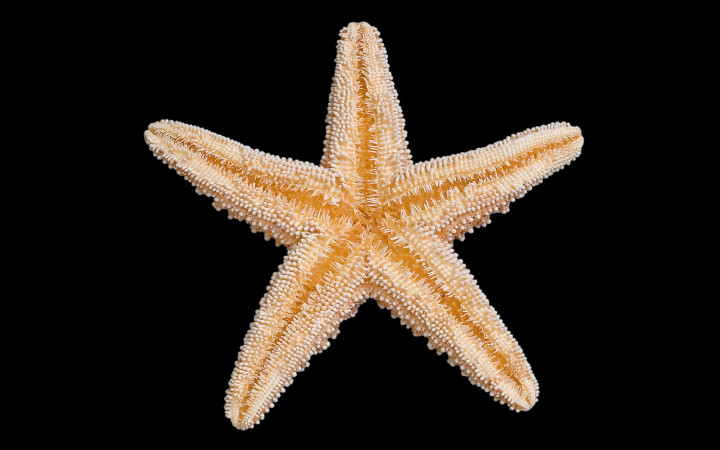Today’s Wonder of the Day was inspired by Lucy. Lucy Wonders, “Do starfish glow in the dark?” Thanks for WONDERing with us, Lucy!
Have you ever sat in your backyard on a warm, summer night? It can be fun just to sit back and enjoy gazing up at the stars that dot the sky. You might even see a shooting star paint a streak across the sky.
We often associate stars with the faint light they produce in the night sky. But what about starfish? Do these sea creatures light up the sea floor the way the stars do the sky?
Some of them do! Starfish that live very deep in the sea are sometimes bioluminescent. However, most starfish don’t glow. The starfish you see on the beach or in shallow water don’t give off light like stars do. Instead, starfish get their name from their shape. Starfish have five radial arms centered around a central disk, giving them their unique star-like shape.
Starfish actually aren’t even fish at all. Most scientists prefer to call them sea stars, since they’re technically echinoderms. Sea stars are related to other echinoderms, including sand dollars, sea urchins and sea cucumbers.
Starfish come in all sorts of colors and sizes. In fact, there are over 2,000 different species of sea stars. They all resemble a star, though! They don’t have gills, scales or fins like fish. They also don’t move like fish. Starfish have lots of tiny tube-like feet on their undersides that help propel them along the sea floor.
One of the interesting things about starfish is that they can regrow a lost arm. Some starfish actually use this ability as a way to protect themselves from predators. If they feel threatened by a predator, starfish can drop an arm, move away and regrow the arm later!
If a starfish loses an arm, it won’t bleed, though. Why? Starfish have no blood! Rather than blood, starfish have a vascular system that pumps sea water through their bodies.
Starfish also have a unique way of eating. A starfish feeds on bivalves, like mussels and clams. It pries open their shells and then does something incredible. It pushes its stomach through its mouth into the bivalve’s shell. After digesting the animal, it then pulls its stomach back into its body! This strange eating process allows a starfish to eat much larger prey than it would otherwise be able to fit into its tiny mouth.
Starfish are very interesting creatures. Would you like to see one? However, people often find other starfish on the beach. Others go snorkeling in starfish habitats. You might also be able to see starfish at your local aquarium. But don’t expect any of those starfish to glow in the dark!
Standards: NGSS.LS1.A, NGSS.LS1.D, NGSS.LS4.B, NGSS.LS4.C, CCRA.L.3, CCRA.L.6, CCRA.R.1, CCRA.R.2, CCRA.R.4, CCRA.R.10, CCRA.W.3, CCRA.L.1, CCRA.L.2, CCRA.W.4, CCRA.SL.1, CCRA.SL.2




